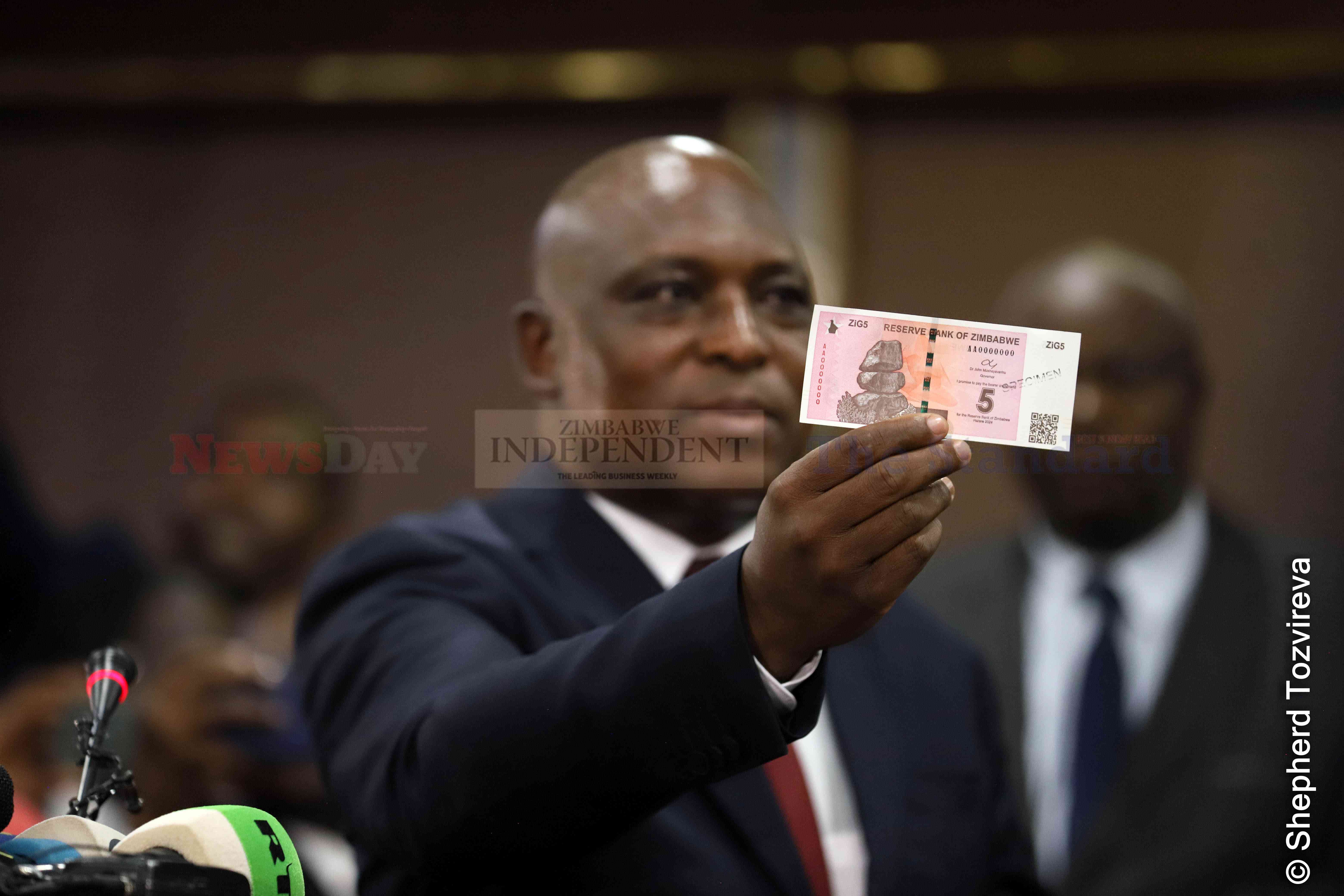
THE government’s ambitious growth projections are unlikely to be met because of protracted blackouts, which have stifled exports and further weakened the local currency.
In December last year, Finance minister Mthuli Ncube projected that the GDP would grow by 3,8% this year.
Last month, he scaled his projections to 6%, citing a “good agricultural season” and “increased electricity availability” as factors behind renewed optimism.
However, in his first quarter Treasury Bulletin released on Wednesday, Ncube also warned that those projections would be hit by tapering international commodity prices. It was one of a few rare occasions when government acknowledged that markets were under fire.
Before this week’s bulletin, the Finance minister massaged inflation figures, bringing in a blended rate that is much lower than triple-digit Zimbabwe dollar-indexed ranges.
But respected global agencies, including the International Monetary Fund, said growth would come through at a much slower pace.
The Zimbabwe National Chamber of Commerce also warned that rolling power outages had grounded industries, with US$4 billion expected to be wiped out due to interruptions to productivity.
On Monday, the Treasury chief made fresh assurances to Zimbabwe, saying “government has made considerable progress in fostering macro-economic stability by implementing a broad range of fiscal and monetary stabilisation measures”.
- Revisiting Majaivana’s last show… ‘We made huge losses’
- Dual economy Zim’s Achilles heel
- Edutainment mix: The nexus of music and cultural identity
- ChiTown acting mayor blocks election
Keep Reading
Days earlier, he had raided retailers in Bulawayo, after blaming them for firing up the price rage and economic pain.
But in the bulletin released on Monday, Ncube gave graphic illustrations of factors stalling growth, but said the situation was under control.
“The economy exhibited positive economic performances during the quarter, characterised by agriculture summer cropping season activities, as well as increasing mining activities,” Ncube said in the report.
“However, intermittent power supply and depreciation of the local currency presented a challenge for industry and households, compromising the attainment of the economic growth potential.”
Growth will not only be frustrated by external factors in 2023, but with a range of global factors including a slowdown in mineral prices, the report said.
The bulletin noted that the impact of commodity price cuts was felt during the review period.
“Declining international mineral commodity prices affected the performance of the country’s exports, resulting in a trade deficit of US$621,8 million as imports remained firm against declining exports. Exports declined substantially relative to the previous quarter and comparable period last year, while imports remained relatively high, resulting in the worsening of the trade deficit.
“Resultantly, the trade balance worsened by 26,6% to US$621,8 million compared to a deficit of US$491 million recorded in the last quarter of 2022. The worsening of the trade balance was a result of declining exports driven by decline in international commodity prices for some minerals such as PGMs (platinum group metals) combined with declining export volumes for gold and tobacco, among others,” the report said.
It said exports fell by 23,8% during the period to US$1,4 billion after closing at US$1,8 billion during the fourth quarter of last year.
The report added that power generation also declined during the period compared to the same period last year.
“Energy sent out during the quarter stood at 1 347,6 gigawatt hours (GWh), falling short of the 2022 first quarter production of 2 267,3 GWh by 40,6%,” said the bulletin.
“Kariba South Power Station has been producing an average of 350 megawatt hour (MWh), below its installed capacity of 1 050 MWh,” the report noted.
It said Hwange Power Station was producing an average of 206 GWh during the quarter, which was a 2% decrease relative to the same period in 2022.
Small thermal stations in Zimbabwe continue to underperform due to coal supply and delays in procurement of spare, the bulletin added.
“Power generation is expected to improve due to increased water allocation at Kariba Power Station for the winter wheat season, as well as the commercialisation of Hwange Unit 7 and 8,” it added.
“During the first quarter of 2023, the domestic currency was relatively stable on the official foreign exchange market, although depreciating at a faster rate on the parallel market,” the bulletin noted.
“As a result, the gap between the interbank and parallel exchange markets widened from 45% in January to 72% in March 2023. During the first quarter, the economic activity was slowly picking, notwithstanding both domestic and exogenous challenges facing the economy, especially in the currency front,” it added.










